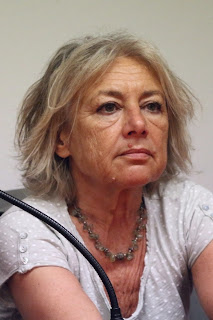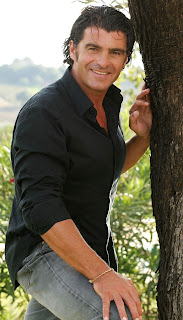Elevation of military leader ends Year of Four Emperors
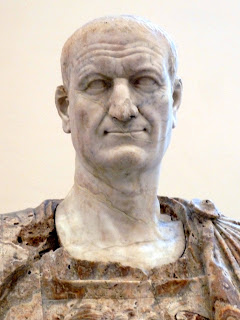 |
| Vespasian, the ninth Emperor of Rome |
The ninth Roman emperor, Vespasian, began his 10-year rule
on this day in 69AD, ending a period of civil war that brought the death of Nero
and encompassed a series of short-lived administrations that became known as
the Year of the Four Emperors.
Nero committed suicide in June 68 AD, having lost the
support of the Praetorian Guard and been declared an enemy of the state by the
Senate.
However, his successor, Galba, after initially having the
support of the Praetorian Guard, quickly became unpopular. On his march to Rome, he imposed heavy fines on
or vengefully destroyed towns that did not declare their immediate allegiance
to him and then refused to pay the bonuses he had promised the soldiers who had
supported his elevation to power.
After he had several senators and officials executed
without trial on suspicion of conspiracy, the Germanic legions openly revolted
and swore allegiance to their governor, Vitellius, proclaiming him as emperor. Bribed by Marcus Salvius Otho, the Roman military
commander, members of the Praetorian Guard set upon Galba in the Forum on
January 15, 69AD and killed him.
Otho was named as Galba’s successor but the Germanic legions
were unhappy and persuaded their leader to march on Rome and claim power. Defeated
in the Battle of Bedriacum, which took place in an area close to today’s city
of Cremona, Otho committed suicide, having been emperor less than three months.
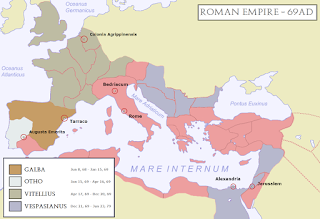 |
| The make-up of the Roman Empire in 69AD |
Now Vitellius was declared emperor but his extravagance in power
drove the imperial treasury close to bankruptcy and when he began the torture and
murder of both moneylenders and opponents of his regime it was clear he would
struggle to retain power.
Meanwhile, Vespasian, who had acquired kudos as a military
leader during the invasion of Britain in 43AD and had been charged by Nero with
quelling the Great Jewish Revolt of 67AD as the appointed commander in Judaea,
was building a powerbase in the east, where he had the support of the legions
in Syria and Egypt.
With the eastern legions behind him, he marched on Rome. At
the same time, the Danubian legions in the north declared their support for him
and an army led by Marcus Antonius Primus scored a spectacular victory over Vitellius’s
army in the Second Battle of Bedriacum.
Back in Rome, Vitellius desperately offered bribes in the
hope of rallying some support and when this failed he had no option but to flee. Before he could escape Rome, however, he was
captured by Vespasian’s army and killed on December 20.
 |
| The Colosseum in Rome was begun by Vespasian and completed by his son, Titus |
The Senate accepted Vespasian as emperor the following day
and he remained in control for 10 years until his death in 79AD, probably from
dysentery.
He did not take up office in Rome until 70AD, at first remaining
in Egypt to consolidate his power base and quell the opposition that still
existed there from pockets who had supported to one or other of his
predecessors. His son, Titus, meanwhile, completed the job he had been given to
restore order in Judaea.
When Vespasian did move to Rome, he reformed the financial system and initiated several ambitious construction projects, including the Flavian
Amphitheatre, better known today as the Roman Colosseum.
As a response to the revolts of 68–69, Vespasian introduced
strict rules of conduct to strengthen army discipline. Also, through his
general, Agricola, Vespasian continued imperial expansion in Britain.
After his death, he was succeeded by his eldest son, Titus.
It was the first time a Roman emperor had been succeeded directly by his own
natural son and the period of their combined rule, along with that of Titus's brother, Domitian, became known as the Flavian
dynasty, after the family name of Flavius.
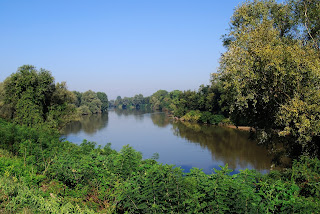 |
| Calvatone is home of the La Bine Nature Reserve |
Travel tip:
The Battles of Bedriacum are thought to have taken place
close to the present-day village of Calvatone, about 35km (22 miles) east of
Cremona in Lombardy. The area is well
known for the protected area known as La Bine Nature Reserve, an area of
marshland either side of the Oglio river that is home to a wide variety of
flora and fauna, featuring many aquatic mammals and birds in particular.
Travel tip:
Rome’s Colosseum, built of travertine, tuff, and brick-faced
concrete, was the largest of all the Roman amphitheatres. Construction began
under Vespasian in 72AD and was completed by his son, Titus, in 80 with further modifications
were made during the reign of Titus’s younger brother, Domitian (81–96), the three
emperors who made up the Flavian dynasty. It is estimated the Colosseum could
hold up to 80,000 spectators. It is thought
that, having been known first as the Flavian Amphitheatre, it became known colloquially
as the Colosseum because of its proximity to a colossal statue of Nero.

